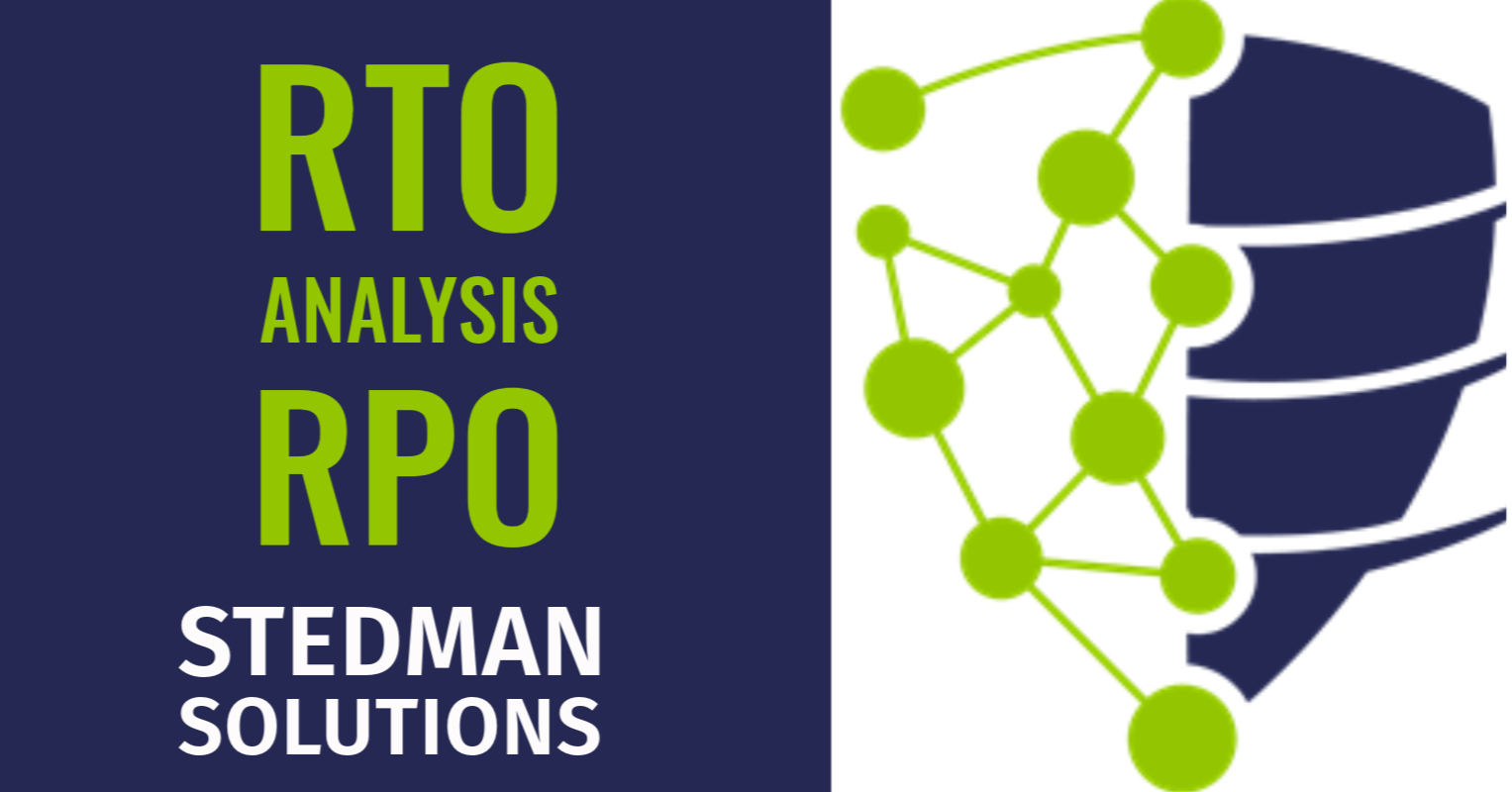Understanding RPO and RTO with SQL Server
In the realm of SQL Server management, two crucial concepts that every DBA and IT manager must understand are Recovery Point Objective (RPO) and Recovery Time Objective (RTO). These metrics are pivotal in planning for disaster recovery and ensuring business continuity. Let’s dive into what RPO and RTO mean, how they apply to SQL Server, and how Stedman Solutions can help you achieve optimal performance and reliability.
What is RPO?
Recovery Point Objective (RPO) refers to the maximum acceptable amount of data loss measured in time. In other words, RPO defines how much data your organization can afford to lose in the event of a disaster. For instance, if your RPO is set to 1 hour, your backup strategy should ensure that no more than one hour’s worth of data is lost.
What is RTO?
Recovery Time Objective (RTO) is the maximum acceptable length of time that a system, application, or data can be offline after a disaster occurs. RTO is essentially the target time you set for the recovery of your operations and systems. For example, if your RTO is 4 hours, your disaster recovery plan should enable you to restore your SQL Server and have it back online within that timeframe.
Importance of RPO and RTO in SQL Server
Both RPO and RTO are critical in planning your SQL Server disaster recovery strategy. They help you determine the appropriate backup and restoration processes, choose the right technologies, and set the correct expectations with stakeholders.
- Data Loss Tolerance (RPO): Understanding how much data loss is acceptable guides the frequency of your backups. More frequent backups result in lower RPOs, ensuring minimal data loss but potentially requiring more storage and bandwidth.
- Downtime Tolerance (RTO): Knowing how quickly you need to restore operations helps you design a recovery plan that meets your business needs. This might involve using advanced techniques like log shipping, database mirroring, or Always On Availability Groups to ensure rapid recovery.
Implementing RPO and RTO in SQL Server
To effectively implement RPO and RTO, follow these best practices:
- Assess Business Requirements: Understand the criticality of different applications and databases. Not all systems require the same RPO and RTO. Prioritize based on business impact.
- Backup Strategy: Design a backup strategy that aligns with your RPO. This could involve a mix of full, differential, and transaction log backups. For instance, if your RPO is 15 minutes, you might need transaction log backups at that interval.
- High Availability Solutions: Leverage SQL Server’s high availability features like Always On Availability Groups, failover clustering, and log shipping to meet your RTO. These solutions can significantly reduce downtime and ensure quicker recovery.
- Regular Testing: Regularly test your disaster recovery plan. Ensure that backups can be restored within the desired RTO and that the data recovered meets your RPO.
- Monitoring and Alerts: Use monitoring tools like Database Health Monitor to keep an eye on your SQL Server environment. Timely alerts and insights can help you address issues before they escalate into major problems.
How Stedman Solutions Can Help
At Stedman Solutions, we specialize in SQL Server performance tuning and disaster recovery planning. Here’s how we can assist you in achieving optimal RPO and RTO:
- Expert Staffing: Our team comprises seasoned DBAs with over 20 years of experience, ensuring you get the best expertise in SQL Server management.
- Continuous Monitoring: With our Database Health Monitor tool, we provide continuous surveillance, proactive alerts, and immediate remediation to minimize downtime.
- Customized Backup Plans: We design and implement backup strategies tailored to your specific RPO and RTO requirements.
- High Availability Configuration: We set up and manage high availability solutions, ensuring your SQL Server is resilient and recoverable within your desired RTO.
- Regular Reviews and Testing: We conduct regular reviews and tests of your disaster recovery plan to ensure it meets your evolving business needs.
Understanding and implementing RPO and RTO are essential for maintaining SQL Server performance and ensuring business continuity. By carefully planning and leveraging the right tools and expertise, you can safeguard your data and minimize downtime. Stedman Solutions is here to help you achieve these objectives with our comprehensive managed services and SQL Server expertise.
Ready to optimize your SQL Server disaster recovery plan? Contact Stedman Solutions today and ensure your business is always prepared for the unexpected.
